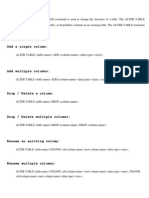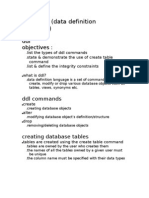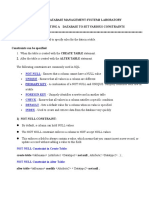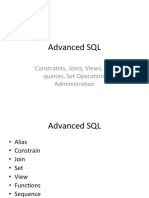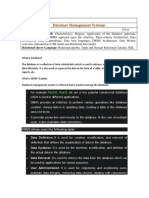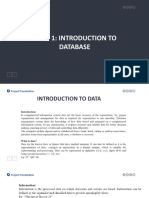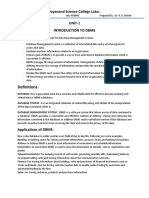0% found this document useful (0 votes)
41 views37 pagesDatabase Systems Lecture 8
This document discusses SQL commands for creating and managing database tables. It covers the CREATE TABLE statement for defining a table's structure, including naming rules, data types, and constraints. The ALTER TABLE statement is described for modifying existing tables by adding, removing, or changing columns and constraints. Other statements covered include RENAME to change a table's name, and DROP TABLE to remove a table and its data. Constraints like PRIMARY KEY, FOREIGN KEY, UNIQUE, NOT NULL, and CHECK are also summarized. Examples are provided for creating tables and modifying them using these SQL DDL commands.
Uploaded by
Humam Al-DhubhaniCopyright
© © All Rights Reserved
We take content rights seriously. If you suspect this is your content, claim it here.
Available Formats
Download as PDF, TXT or read online on Scribd
0% found this document useful (0 votes)
41 views37 pagesDatabase Systems Lecture 8
This document discusses SQL commands for creating and managing database tables. It covers the CREATE TABLE statement for defining a table's structure, including naming rules, data types, and constraints. The ALTER TABLE statement is described for modifying existing tables by adding, removing, or changing columns and constraints. Other statements covered include RENAME to change a table's name, and DROP TABLE to remove a table and its data. Constraints like PRIMARY KEY, FOREIGN KEY, UNIQUE, NOT NULL, and CHECK are also summarized. Examples are provided for creating tables and modifying them using these SQL DDL commands.
Uploaded by
Humam Al-DhubhaniCopyright
© © All Rights Reserved
We take content rights seriously. If you suspect this is your content, claim it here.
Available Formats
Download as PDF, TXT or read online on Scribd
/ 37











